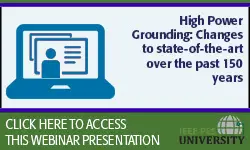Improving Resilience in the Energy Sector Against Wildfires on Alaskan Lands
Mohammad Heidari Kapourchali, University of Alaska Anchorage
-
Members: FreeTechnical Community
IEEE Members: Free
Non-members: FreeLength: 00:40:19
31 Oct 2023
Climate change is increasing the vulnerability of Arctic communities to natural hazards including wildfire incidents. In recent years, Alaska has witnessed high-intensity wildfires that often grow to tens or hundreds of thousand acres within days, both in remote, sparsely populated rural areas and close to population centers. Wildfires are projected to increase and present emerging risks to Alaskan infrastructures and communities.
This presentation will introduce the ongoing NSF Navigating the New Arctic-supported project titled "Foundations for Improving Resilience in the Energy Sector against Wildfires on Alaskan Lands (FIREWALL)". The FIREWALL project aims to develop a risk-informed decision-making platform that integrates (1) formation, short-term prediction, and spatiotemporal propagation analysis of wildfires on Alaskan lands, (2) Alaska's electricity network planning, preparedness, response, and mitigation facing wildfires, and (3) community health and social vulnerability metrics. The presentation will offer a summary of the outcomes derived from the FIREWALL Workshop, along with sharing preliminary results on the prediction of wildfire risks in Alaska.
This presentation will introduce the ongoing NSF Navigating the New Arctic-supported project titled "Foundations for Improving Resilience in the Energy Sector against Wildfires on Alaskan Lands (FIREWALL)". The FIREWALL project aims to develop a risk-informed decision-making platform that integrates (1) formation, short-term prediction, and spatiotemporal propagation analysis of wildfires on Alaskan lands, (2) Alaska's electricity network planning, preparedness, response, and mitigation facing wildfires, and (3) community health and social vulnerability metrics. The presentation will offer a summary of the outcomes derived from the FIREWALL Workshop, along with sharing preliminary results on the prediction of wildfire risks in Alaska.


